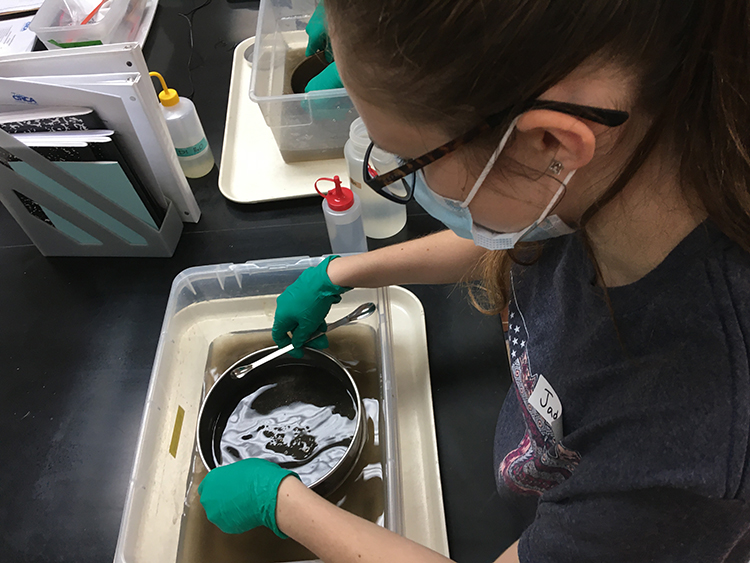
“It feels like what I’m doing will actually have an impact in the world,” said Indian River Charter School junior Ana Cancio Trelfa. “The data we collect will go toward the idea that the lagoon needs help.”
ORCA – the nonprofit Ocean Research and Conservation Association – is mapping pollution in the lagoon and its connecting waterways, such as Bethel Creek, with the help of Ana and 11 other students from Indian River Charter, Vero Beach High, and Sebastian River High.
The internship program, now in its first year, trains the students to “basically become experts in pollution mapping,” said Missy Weiss, ORCA’s director of citizen science and education.
Ana, who has an abiding interest in biological science but not much experience with the Indian River Lagoon was taken aback by the amount of muck she found on her first water sampling trip to the Gifford Docks.
“I didn’t really know a lot about this,” she said. “But the fact that muck exists is really bad for the lagoon, and we saw tons out there.”
Muck, a foul, black mayonnaise-like coating of nitrogen, phosphorus and decaying organic material on the lagoon bottom, suffocates the sea grass beds that are the foundation of the lagoon’s ecology.
In some parts of the waterway, muck stands 10 feet deep. When it is stirred up by storms or other causes of turbulence, it emits pollution into the water column, clouding the water and feeding destructive algae blooms.
The new internship program is funded by grants from the Indian River Community Foundation, Schooner Foundation and Link Foundation. Students meet with ORCA scientists twice a month – independent of their schools – to learn how to take water and sediment samples from four suspected pollution hot spots in the lagoon and analyze them in the lab at the Vero Beach Citizen Science Center.
The students test for the nutrients nitrogen and phosphorus which contribute to algae blooms, as well as ammonia, muck, temperature, salinity and dissolved oxygen. Then ORCA staffers plug those findings into lagoon-wide pollution maps that can be used by policymakers seeking to reduce lagoon pollution and restore the waterway.
“The students are doing a lot of what a scientist would be doing at ORCA,” Weiss said.
The teens will embark on their next sampling trip in February at Gifford Docks, MacWilliams boat ramp, Royal Palm Pointe, and a spot near the Riverside Cafe, with two more samplings planned for this spring and summer. Five other lagoon sites are monitored by Sunrise Rotary Club of Vero Beach and other groups as part of the pollution mapping effort.
Weiss said the internship has a leadership as well as a science component – Ana and her 11 fellow interns are creating training materials for future pollution mapping groups, including classmates they recruit and train themselves.
ORCA’s goal is to establish an ongoing, self-sustaining citizen science monitoring program throughout the lagoon to keep track of pollution and other conditions in the waterway to assist in lagoon restoration.
As for Ana, while her main interest is in studying birds, she loves the lagoon field work. “I really like being a part of scientific research,” she said.






